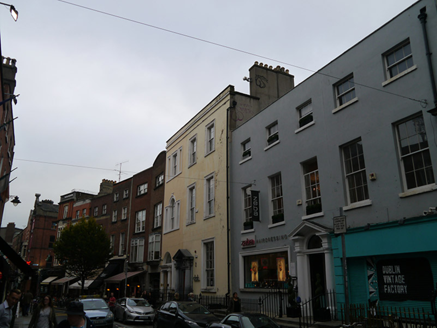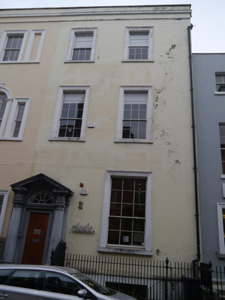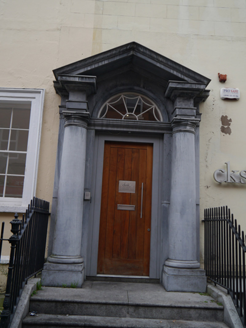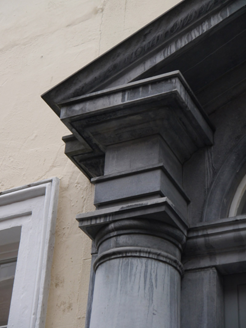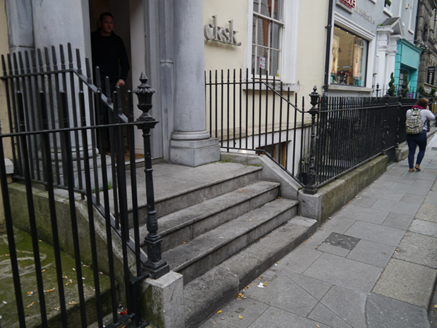Survey Data
Reg No
50910082
Rating
Regional
Categories of Special Interest
Architectural
Original Use
House
In Use As
Office
Date
1760 - 1770
Coordinates
315807, 233871
Date Recorded
13/11/2015
Date Updated
--/--/--
Description
Attached two-bay three-storey former house over basement, built c. 1765, originally part of three-bay house, historically subdivided and in commercial use as offices. Pitched roof, with pavilion roof to rear and unpainted rendered chimneystack with lipped yellow clay pots to south party wall, concealed behind rendered parapet with masonry coping over moulded cornice. Concealed gutters, with gutter and cast-iron downpipe breaking through to south. Painted ruled-and-lined rendered walling. Square-headed window openings with projecting painted masonry sills, moulded surrounds, and timber sliding sash windows, six-over-six pane to top floor and nine-over-six pane to lower floors; replacement tripartite full-height window opening to basement with timber casement window. Replacement round-headed door opening, with doorcase comprising Doric columns on plinth stops supporting open-bed pediment, and having moulded transom, blocking course, cobweb fanlight, and replacement timber door. Door opens onto granite platform with four steps to street flanked by cast-iron railings, with decorative finials to corner posts, on granite plinth enclosing basement area. Recent square-headed replacement timber door beneath platform, accessed from street by modern concrete steps with steel handrails.
Appraisal
This property is a part of what was once a larger townhouse, later divided into two separate units. The building, now converted to offices, has a doorcase that is rather oversized by comparison to the doorcase in the adjoining building, resulting in a somewhat overcrowded appearance to the facade. Nevertheless, it, along with its neighbour, remains one of the most impressive architectural features on South William Street. With its stucco frontage and subtle embellishment, it contributes significantly to the diversity of this historic street and is one of the better examples of eighteenth-century architecture in the streetscape.
